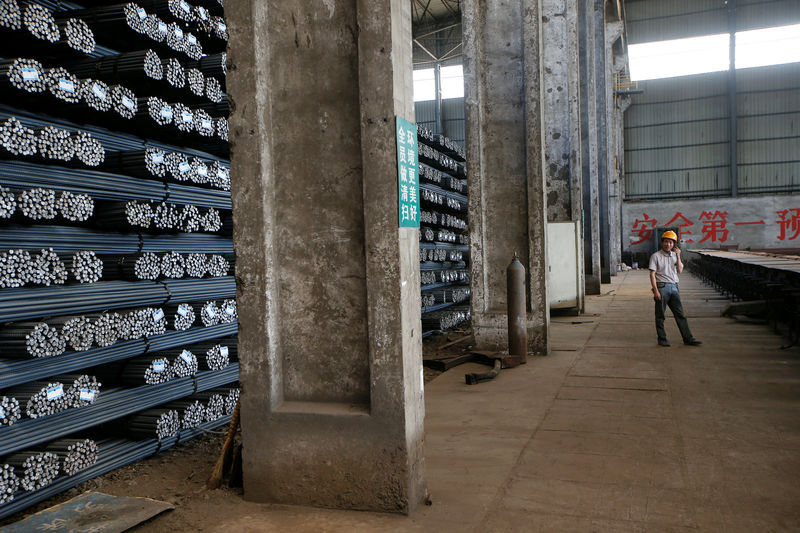(The opinions expressed here are those of the author, a columnist for Reuters.)
By Clyde Russell
LAUNCESTON, Australia, May 19 (Reuters) - If you want an example of how not to solve an intractable problem, look no further than the tit-for-tat measures on steel announced by the United States and China.
There is little doubt the massive overcapacity of steel is a major headache for global trade. Steel is an industry where politics, economics and sentiment intersect, a combination that makes it all the more difficult for governments around the globe to coordinate a sensible way out of the current dilemma.
Passions are further inflamed by the threat of closure of long-standing industries that symbolise the might and history of economic development.
Thus, the U.S. Commerce Department announced on May 17 duties of more than 500 percent on imports of Chinese cold-rolled flat steel products, which are used for vehicles, appliances and construction. later, China's finance ministry said it would continue to give a tax rebate on steel exports, even as it also released a policy document outlining how it would make funds available to curb overcapacity in steel and coal.
China slammed the U.S. tariffs, accusing Washington of "unfair methods during the anti-dumping and anti-subsidy investigation into Chinese steel products." effect, what happened this week is that the world's two biggest economies engaged in a slanging match and took measures that will do virtually nothing to solve a serious global issue.
China's steel exports to the United States are statistically insignificant, with a value of only $272 million in cold-rolled flat steel product in 2015.
This means the U.S. tariff action won't make much of a dent in China's total steel exports, which were a record 112.4 million tonnes last year - worth nearly $50 billion - and were up 7.9 percent to 27.83 million tonnes in the first quarter of this year.
Conversely, the decision by Beijing to continue to offer tax rebates on exports will make a difference, and may contribute to keeping Chinese exports cheaper than those from other countries.
More important than the actual impact of the measures announced by the United States and China is the impact on the tone of the discussion and the willingness of all parties to cooperate and reach consensus.
The Group of Seven nations have steel on the agenda for a meeting on May 26-27 in Japan, and a draft text obtained by Reuters points to hopes for coordinated action on the global steel glut. recognise the negative impact of global excess capacity across industrial sectors, especially steel, on our economies, trade and workers," the draft text says.
"We are committed to moving quickly in taking steps to address this issue by enhancing market function, including through coordinated actions that identify and seek to eliminate such subsidies and support, and by encouraging adjustment."
These are fine sentiments, but a serious question mark has to be placed over whether any concrete action will emerge from the G7 meeting, given the increasingly bellicose statements and actions from the major players.
PLAYING THE BLAME GAME
The problem for the steel industry is that everybody blames everybody else and nobody appears willing to compromise.
For their part, the Chinese say they are committed to eliminating 100-150 million tonnes of excess capacity in the next five years, a process that will cost 400,000 jobs and billions of dollars in payments to retrain workers and establish new industries.
That reduction in tonnage sounds like a lot, but the problem is it would only get rid of about half of China's current excess capacity and still leave it able to produce more steel than the rest of the world combined.
Governments across the globe with steel industries, though, are more concerned about protecting domestic jobs and maintaining a strategic industry.
These governments are more likely to hold the view that China created this problem by overbuilding its capacity, therefore China should suffer the most in solving the problem.
The risk is that such attitudes harden all around, with more trade barriers being erected, and possibly extending to industries beyond steel.
History shows trade wars generally produce only losers, but it looks likely that matters will get worse before wiser heads prevail.
<^^^^^^^^^^^^^^^^^^^^^^^^^^^^^^^^^^^^^^^^^^^^^^^^^^^^^^^^^^^ Graphic of China's steel output
http://link.reuters.com/dej85w
^^^^^^^^^^^^^^^^^^^^^^^^^^^^^^^^^^^^^^^^^^^^^^^^^^^^^^^^^^^> (Editing by Tom Hogue)
